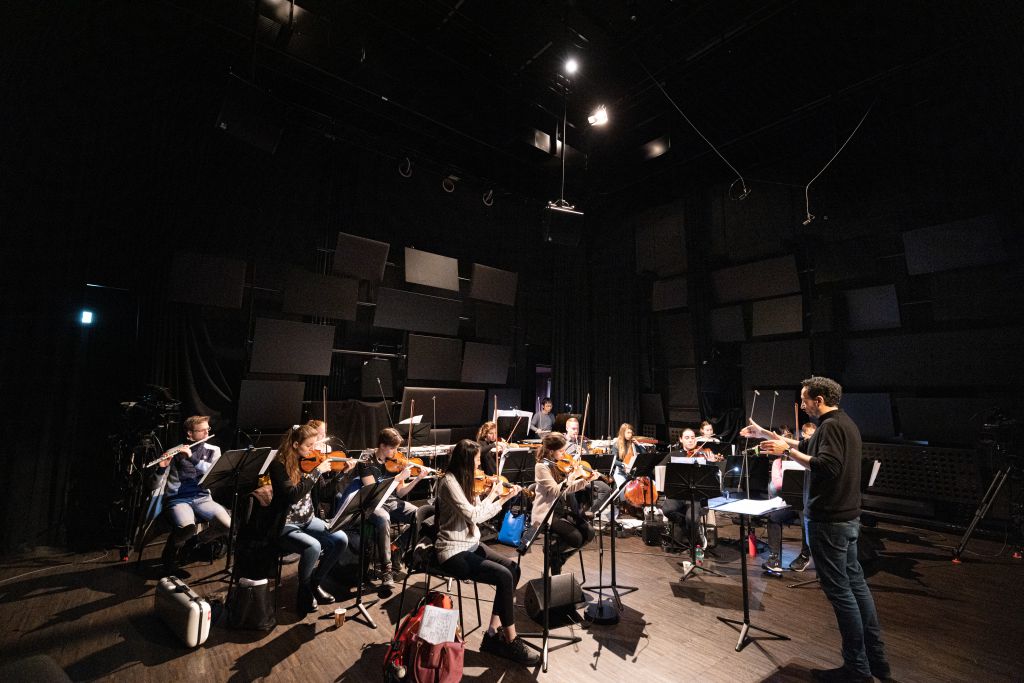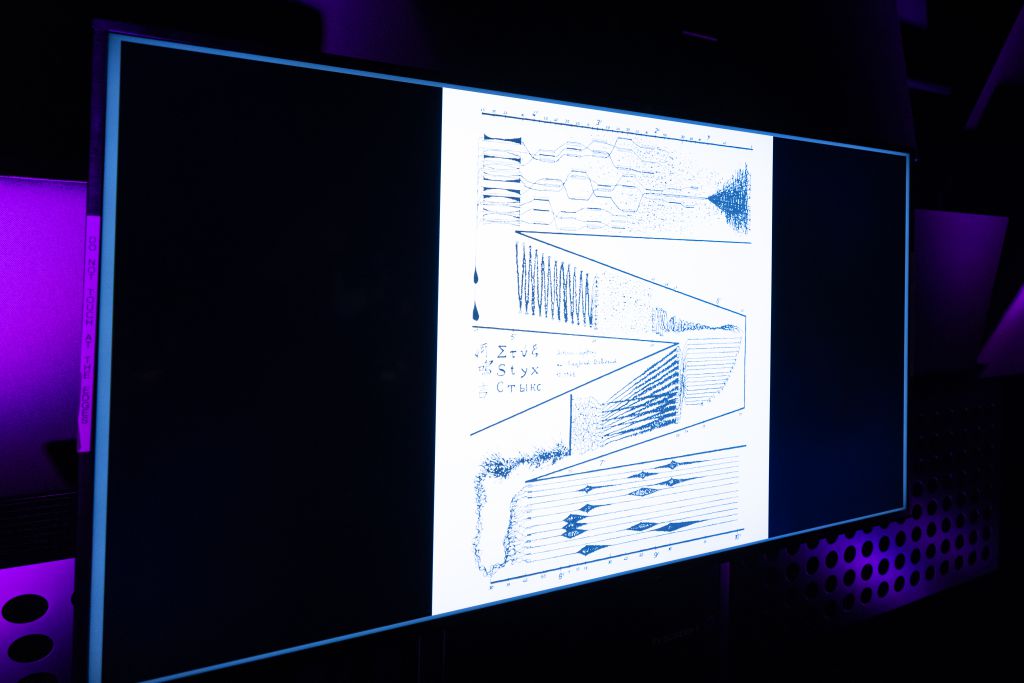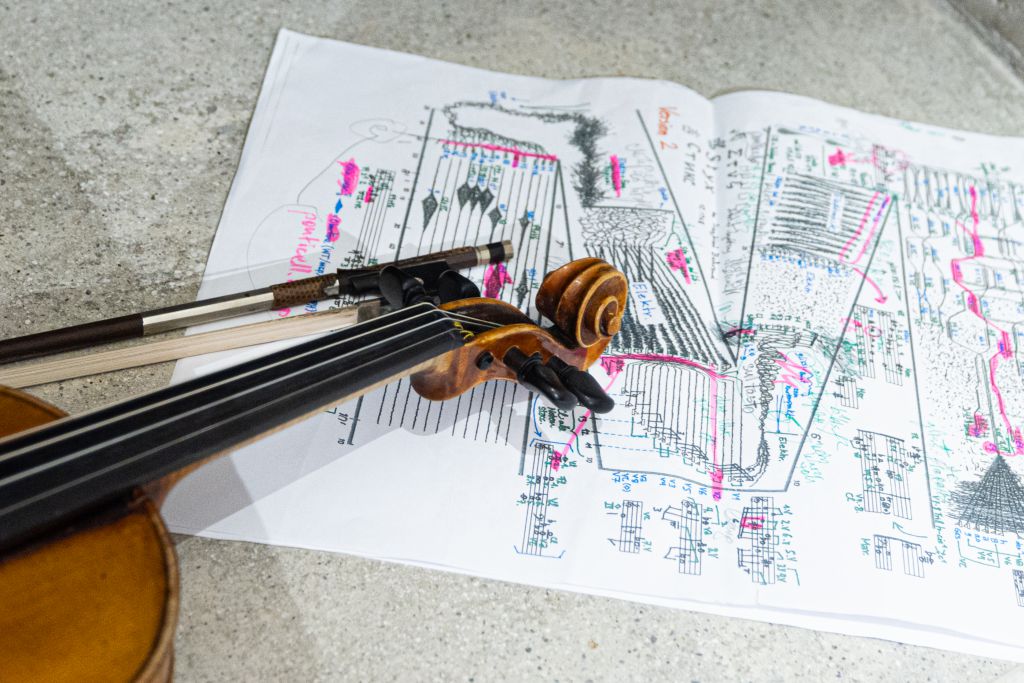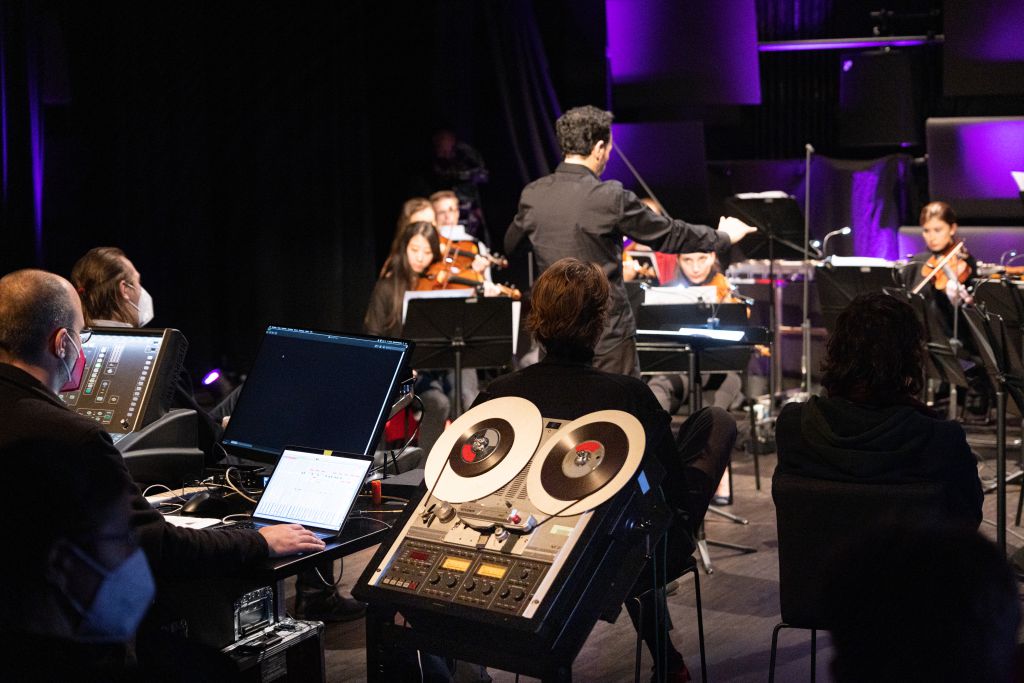The FAL Sound Theatre as a New Performance Space for Electroacoustic and Experimental Music
It was with the Rotting Sounds Symposium on 23 and 24 September and the concert Einschreibung, Übertragung, Abtragung [Inscription, Transcription, Erosion] on the evening of 12 November in cooperation with Vienna’s contemporary music festival Wien Modern that we presented the Future Art Lab’s (FAL) Sound Theatre to the public with an audience present for the very first time.
Though both events also went out via a high-quality stream, that option can never replace an immersive sonic experience within the actual physical space.

As described in the article “The Sound Theatre – Virtual Spaces and Subterranean Thunder on the Campus” by Wolfgang Musil (in our December 2020/January 2021 issue), this venue possesses outstanding spatial acoustics and sonic properties that predestine it to be used an acoustic laboratory for research and teaching—especially where the performance of electroacoustic music is concerned. The evening concert Einschreibung, Übertragung, Abtragung, held as part of Wien Modern, placed a special focus on two aspects of musical creativity: on the dynamic relationship between compositions’ conception and their interpretation, and on techniques of rendering music permanent that range from notation to the storage of recorded sounds. The presented compositions employ a broad spectrum of performance instructions rendered in “conventional” or graphic notation or recorded on analogue and digital media. In all cases, the result is a specific realm of possibility for musical interpretation—in terms of both instrumental performance and the sonic and spatial realisation of the electroacoustic contributions. Works by Anestis Logothetis, who graduated from the Academy of Music and Performing Arts Vienna (today’s mdw), enjoyed pride of place In recognition of what would have been this composer’s 100th birthday. Though his graphic scores are not of an open character, the transition from a visual to an acoustic medium does bear within it interesting transformative possibilities in both form and gesture on various temporal and sonic levels. This was explored in two ways: the first of these consisted in four short works by students from the Electroacoustic and Experimental Music (ELAK) certificate programme who had developed individual transcriptions of such scores in electronic media. The second approach was taken by the Webern-Ensemble under Jaime Volfson, which presented two differently conceived performances of Logothetis’s styx—the one purely instrumental, the other with one of its parts rendered electronically. The two pre-recorded pieces echtzeitcomputermusik and LOGOTHETIS, which bookended the evening, were compositions created directly on their respective media, the one analogue and the other digital. Their interpretation—which is to say, their acoustic projection in the Sound Theatre using a total of 21 hemispherically arranged loudspeakers—consisted in the challenge of staging stereophonic sound recordings within a space.

The instructions entailed by the written notation to rill (created by Adam McCartney and Thomas Grill as part of the artistic research project Rotting Sounds) are deceptive: even though the original composition is immaculately notated using digital tools, the two subsequent variants are blurred quite substantially by erosive processes. This flawed and/or incomplete notation requires that the performers go beyond the usual latitudes of instrumental interpretation and work out changes that are sometimes quite extensive. The purely electroacoustic fourth variant makes use of the sonic material produced by these interpretations and proceeds to “correct” it from the idiomatic perspective of the erosion-model.

The Sound Theatre offers an ideal setting for the interlacing of instrumental/analogue and electroacoustic/digital aesthetics that so many experimental compositions cultivate. Relationships between sound and space can be revealed in a detailed and analytic fashion thanks to this room’s bone-dry acoustics, and a huge dynamic range (from inaudible to excessively loud) can be enjoyably experienced.
The Certificate in Electroacoustic and Experimental Music (ELAK) programme has now anchored the practice of musical interpretation in this highly specific concert hall via its teaching and research. And over the coming months, it will continue by developing live interpretations of all 13 electroacoustic compositions by Iannis Xenakis. We can therefore already extend a warm invitation to their public presentation in May of 2022—so save the date!


